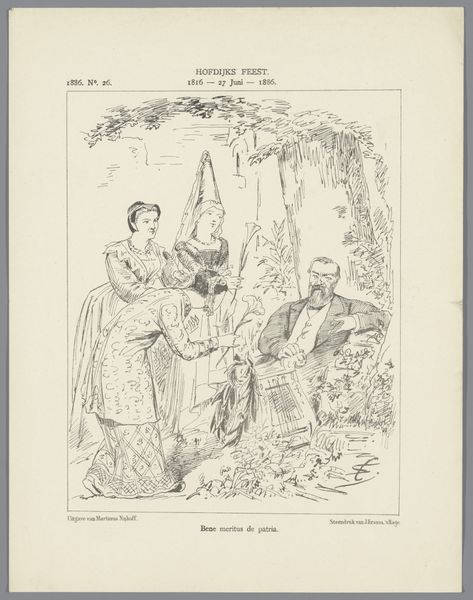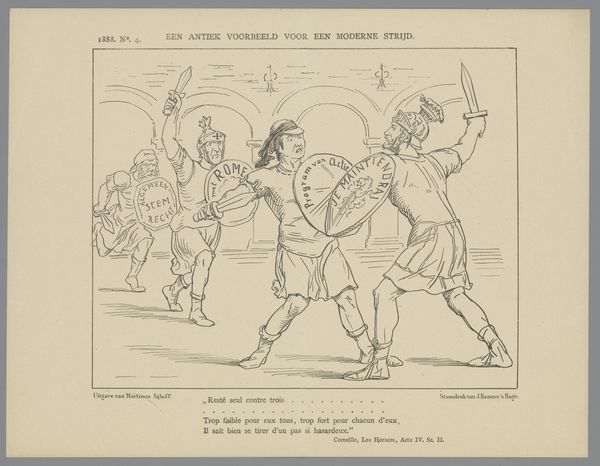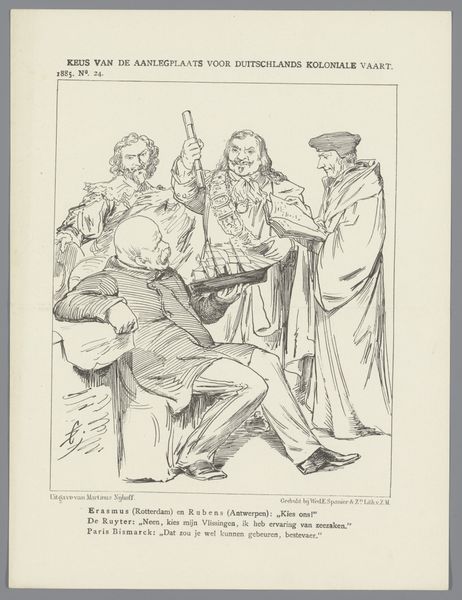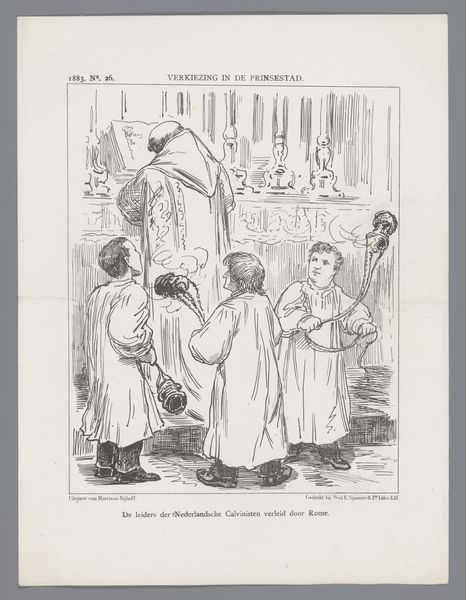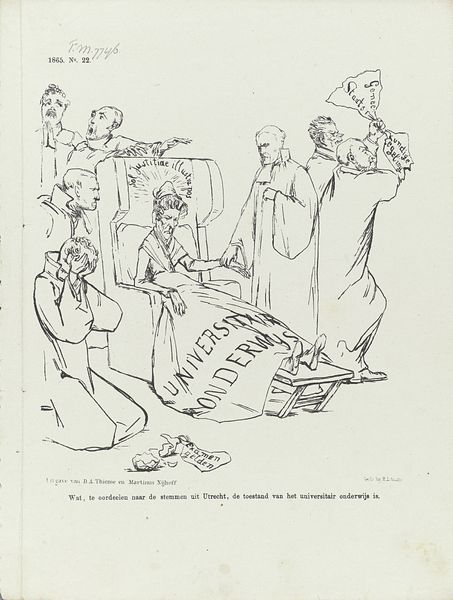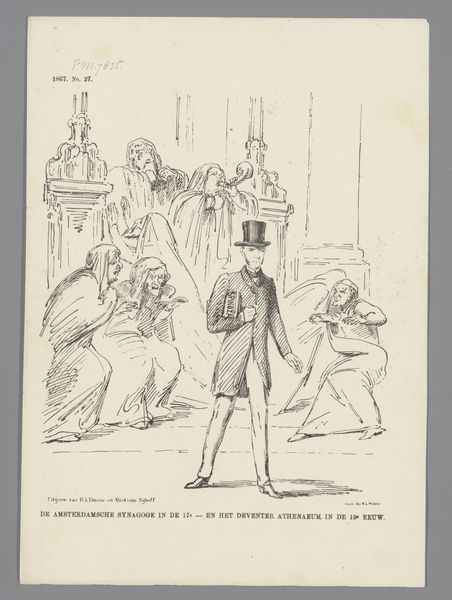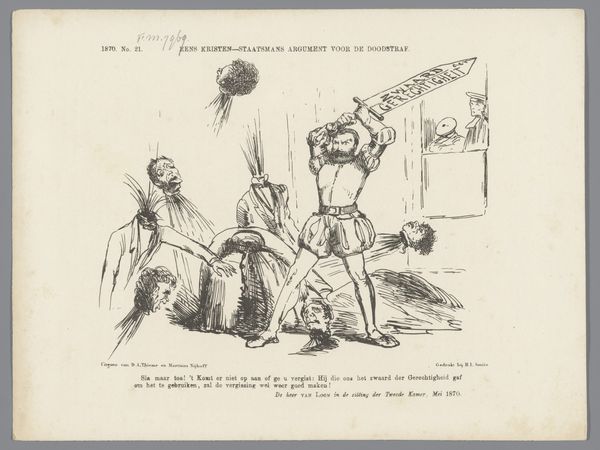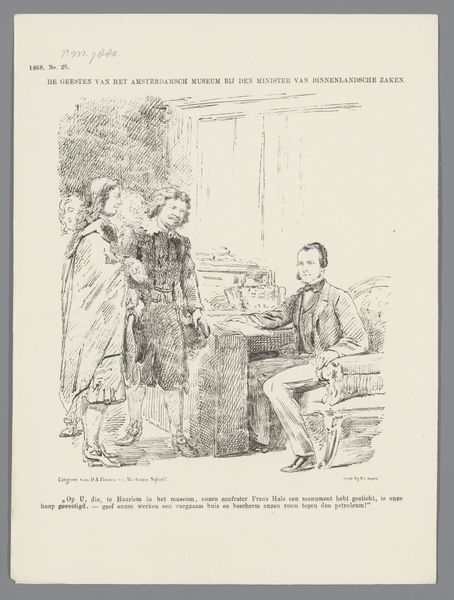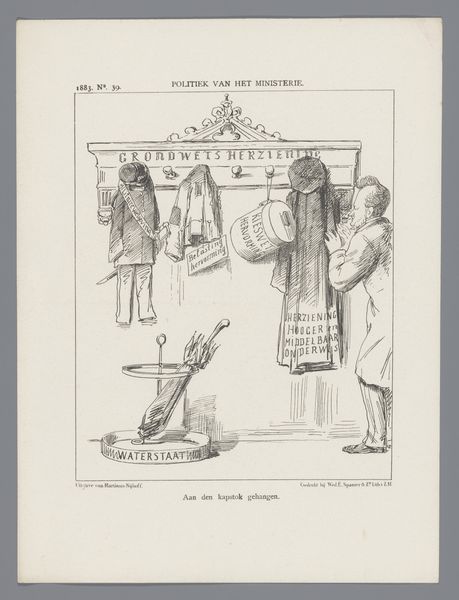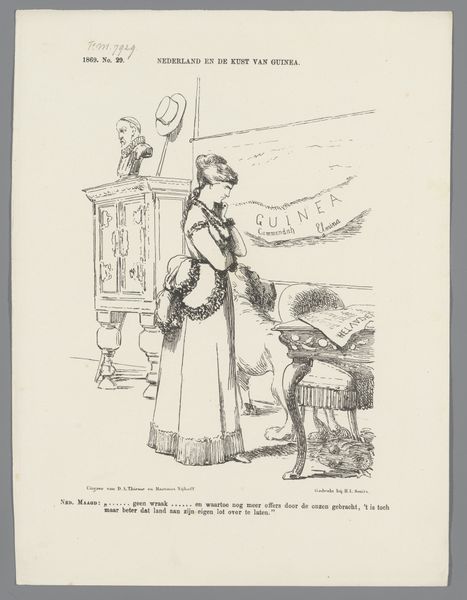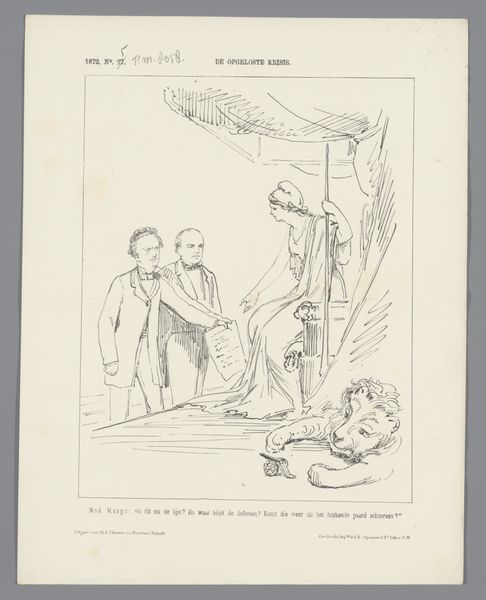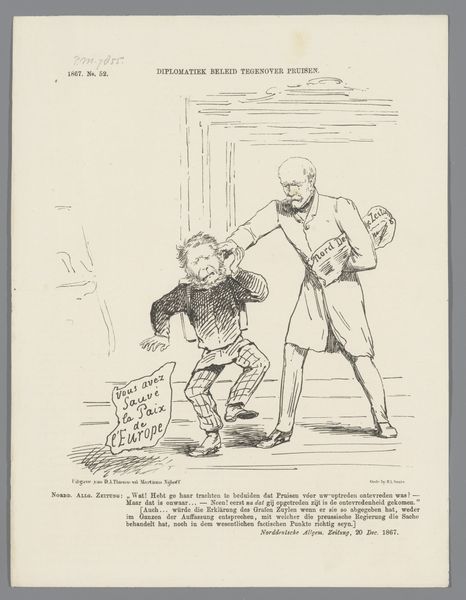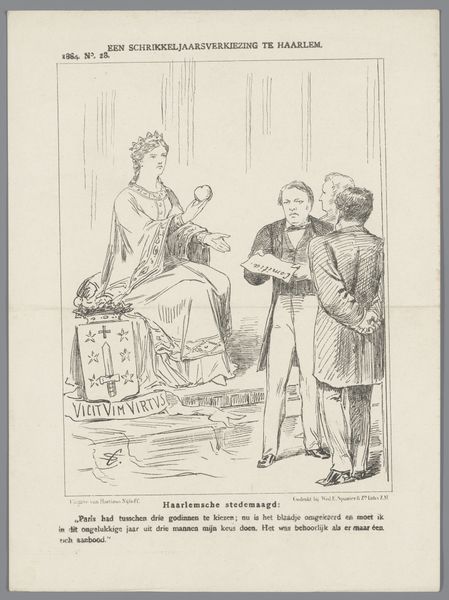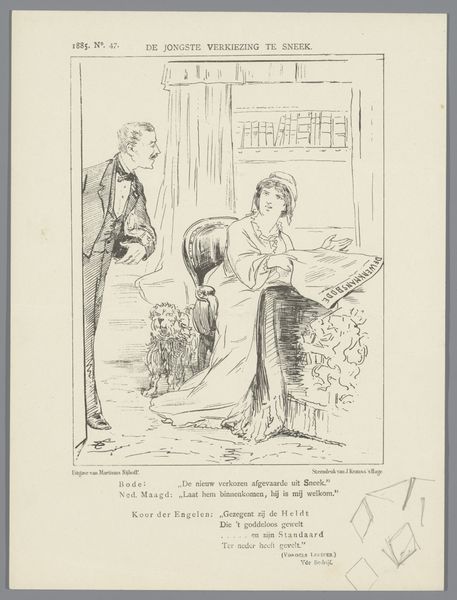
Spotprent over Trakranen en de koloniale kwestie (plaat 2), 1867 1867
0:00
0:00
drawing, print, ink, pen
#
drawing
#
narrative-art
#
dutch-golden-age
# print
#
caricature
#
ink
#
pen
Dimensions: height 275 mm, width 215 mm
Copyright: Rijks Museum: Open Domain
Editor: Here we have "Spotprent over Trakranen en de koloniale kwestie," which translates to "Cartoon about Trakranen and the colonial issue," created in 1867 by Johan Michaël Schmidt Crans using pen, ink, and printmaking techniques. It's quite striking. The figures are posed dramatically, with banners and text. How do you interpret this work? Curator: The piece immediately resonates with its pointed symbolism, doesn't it? Consider how the artist uses familiar visual language to convey a narrative. We see figures cloaked, or draped with what appear to be political agendas, literally burdened by the “Amendment-Putjen” or the “Rochussen Amendement.” Do these names signify something beyond just political policy to you? Editor: Well, I imagine the banners must represent specific proposed amendments or policies related to the colonial question at the time. Curator: Exactly. The figures are not simply individuals but carriers of ideologies. Think about how clothing—here, the banners—transforms identity. The gestures, too, are crucial. One raises his hands in what could be interpreted as supplication, while another averts his gaze. What psychological weight do you think these gestures carry in the overall message? Editor: The averted gaze suggests perhaps denial, or perhaps disagreement, while the raised hands might be pleading or surrendering. Curator: Precisely. These visual cues were instantly recognizable to the contemporary audience, laden with socio-political meaning that resonates even now. And do you notice the lone man seemingly giving orders? Editor: Yes! He looks like he's in charge, leading the unfolding drama. Curator: And the other woman who stands there holding herself? The entire scene is imbued with gestures to signal who profits and who loses in a debate over colonization. It speaks volumes about power, influence, and the human cost often overlooked in political machinations, doesn’t it? Editor: Absolutely. Understanding the context enriches the symbolic layers significantly. Thanks, I learned a lot. Curator: Likewise! It’s a compelling snapshot of a specific moment, yet the visual vocabulary it employs continues to shape how we perceive political discourse even today.
Comments
No comments
Be the first to comment and join the conversation on the ultimate creative platform.
